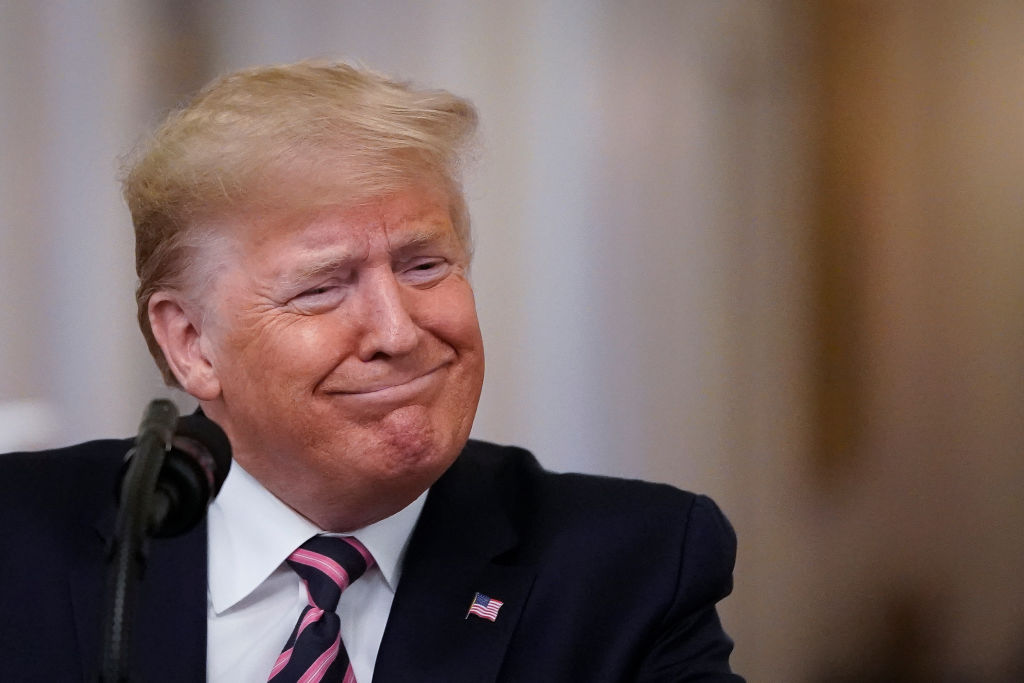US President Donald Trump has announced that Ukraine is ready to sign a deal that gives US investors a share in the country’s mineral riches. Ukraine’s president Volodymyr Zelensky, who two days ago vowed not to sign any deal that his countrymen would be paying for ‘for ten generations’ is due in Washington on Friday to sign a revised accord. The US’s most controversial demand – that Washington keep $500 billion in revenue from exploiting Ukraine’s resources as payback for military aid – has reportedly been removed from the final text.
While the final details of the deal remain undecided, one thing is certain: the scale of Ukraine’s mineral wealth and its actual value on world markets have been spectacularly overstated by both the US and Ukraine.
US diplomats, as well as both Trump and Putin, often speak of Ukraine’s ‘rare earths’ – a list of 17 metal elements used in tiny quantities in electrical circuits. But according to the US Geological Survey, Ukraine has no significant deposits of rare earth metals (REM). And in any case, the entire world market for REMs amounts to just $15 billion a year – much of which is currently controlled by China.
What Ukraine does have are reserves of non-rare minerals such as titanium, lithium, uranium, cobalt, graphite, copper and nickel – plus gas and coal. The problem is that currently most of these deposits are being exploited only on a tiny scale or not at all, and nor does Ukraine have the capacity for refining most of its minerals into finished products. Ukraine, for instance, exported just $29 million of raw uranium ore in total in 2023 and a mere $11.6 million of titanium ore but none of the much more valuable and exportable titanium sponge. Ukraine also reportedly has half a billion tons of lithium ore – but currently has no lithium mines. Investors will have to pour billions into sinking mines and creating processing infrastructure.
There’s another problem. The world is already oversupplied with many of the minerals in which Ukraine is rich. Global lithium sales last year were just $37 billion – down 22 per cent over the previous year on the back of oversupply and weak demand. Ukraine’s only graphite mine, sunk in 1934, suspended operations last December over falling world prices. In 2023 the entire world market for titanium amounted to just $31 billion. Ukraine may have 7 per cent of the world’s reserves of the hard, super-light metal – but it currently exports just 0.3 per cent of global supply.
Ukraine also faces the problem of who controls these deposits. Some of the largest troves of lithium ore – at Kruta Balka in the Zaporizhia region – are under partial Russian occupation. Ukraine’s undoubtedly enormous untapped reserves of natural gas span the north of the Donets river basin, also mostly occupied. Same for its richest reserves of anthracite coal in Soviet-era mines around Donetsk which have been beyond Kyiv’s control since 2014.
The source for the myth of Ukraine’s epic mineral riches was a November 2024 study called ‘Ukraine: Critical Minerals Portfolio’ put out by the Ukrainian government. Formatted like an investment pitch-deck, the report presented Ukraine as a literal gold mine for its future partners. The intention was to engage with the newly-elected Trump team in Washington. It ended with a personal message from Zelensky that Ukraine was ‘The greatest opportunity in Europe since World War II.’ Weeks after, that message was echoed and amplified by another report by a Lithuanian-based NGO which, though not formally affiliated with Nato, styles itself the Nato Energy Security Centre of Excellence. This report claimed that Ukraine’s minerals were ‘vital for nations aiming to lessen reliance on non-democratic countries like China, Russia, Iran, and other non-democratic regimes… the strategic importance of Ukraine’s critical materials cannot be overstated.’
Kyiv’s pitch worked. Ukraine was ‘the richest country in all of Europe,’ Republican Senator Lindsey Graham announced excitedly last December, claiming that Kyiv was sitting upon ‘$2 to $7 trillion’ worth of minerals. The Pentagon had made a similar claim back in 2010 when it announced that Afghanistan was also sitting on a trillion dollars of lithium, enough to make it the ‘Saudi Arabia of lithium.’
Both Graham and the Pentagon were wrong, and for the same reason. Mineral ore in the ground is not the same as refined metals shipped to customers. World demand is finite. ‘Tens of billions of dollars will have to be invested into the strategic metals sector to turn it into revenues,’ writes Ben Aris of BNE Intellinews. ‘And it’s not clear where this money will come from.’
Yesterday Trump boasted that he was about to sign ‘a big deal, very big deal’ with Zelensky. Reportedly the current draft calls for the creation of a Ukraine ‘Reconstruction Investment Fund’ backed by 50 per cent of all revenue from the extraction of minerals, oils and gas. It also declares that ‘the Government of the United States of America intends to provide a long-term financial commitment to the development of a stable and economically prosperous Ukraine – so as to invest in projects in Ukraine and attract investments to increase development.’ The deal also includes a US commitment to keeping Ukraine ‘free, sovereign and secure.’
The optimistic scenario is that the deal will open the door to US firms investing the vast sums needed to rebuild Ukraine’s shattered mines and transport infrastructure, as well as sinking new mines and building up the vast industrial infrastructure needed to refine it. That will give US businesses – and the government – a material vested interest in Ukraine’s future security, as well as creating jobs and opportunities for a war-shattered country. A revamped metal and minerals sector will also help wean Kyiv off its critical dependence on Western aid – currently close to half of Ukraine’s public servants’ salaries are paid for by the EU – and also help the country build its defences.
But the idea that Ukraine’s minerals are some kind of get-rich-quick bonanza for rapacious American capitalists is simply untrue. Kyiv’s resources undoubtedly have value. But it will be a long, hard and expensive slog to get them out of the earth and transformed into ready cash.








Comments